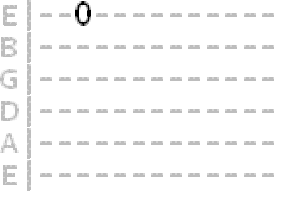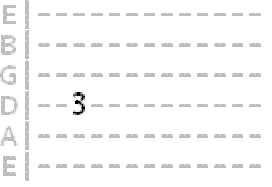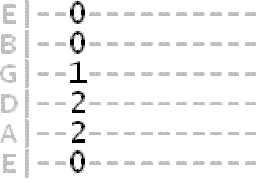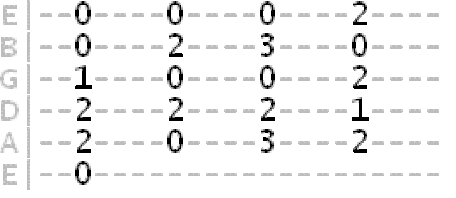How to Read Guitar Tab
You can easily learn how to read guitar tab without any knowledge of classical music notation. After all, when guitarists are learning the chords and lead for a song, they need to know where to stick their fingers.
We'll start with a few examples to get you familiar with the tab diagrams.
Oh, by the way, tab is short for tablature!
This is the fretboard position that tab diagrams mimic. It's the alignment of the strings we're interested in - skinny string at top (1st string), fat string at the bottom (6th string).
We'll start with a few examples to get you familiar with the tab diagrams.
Oh, by the way, tab is short for tablature!
This is the fretboard position that tab diagrams mimic. It's the alignment of the strings we're interested in - skinny string at top (1st string), fat string at the bottom (6th string).
That's a typical blank tab diagram. We ignore the frets on the actual tab diagram because numbers are added on each string to tell you which fret your fingers should press.
Numbers are used on the diagram to indicate at which fret the string should be pressed. However, you will often see a zero...
Numbers are used on the diagram to indicate at which fret the string should be pressed. However, you will often see a zero...
0 marks an open string, which means you play that string as it is, without fretting it.
This 0 can apply to any string and, when noted on the tab diagram, it simply means you do not need to fret that particular string, since the desired note is created by the open string.
Next…
This 0 can apply to any string and, when noted on the tab diagram, it simply means you do not need to fret that particular string, since the desired note is created by the open string.
Next…
So in this example we're fretting the D string at the 3rd fret.
Notice how no fret wires are drawn on the diagram - we don't need them because of those fret numbers!
Ok, so that was pretty easy stuff - let's take things a little further...
We're going to look at part of a guitar scale (actually, the first 4 notes of the G major scale - not important right now!)
Take a look at the tab below and play on your guitar this sequence of notes, fretting the appropriate string one after the other…
Notice how no fret wires are drawn on the diagram - we don't need them because of those fret numbers!
Ok, so that was pretty easy stuff - let's take things a little further...
We're going to look at part of a guitar scale (actually, the first 4 notes of the G major scale - not important right now!)
Take a look at the tab below and play on your guitar this sequence of notes, fretting the appropriate string one after the other…
Note that tab doesn't tell us anything about which fingers we use to fret each note, but you'll pick that up when you move on to learn individual scales.
Timing and speed is also up to you, although in a lot of cases, you'll be using tab as a reference for a song you already know quite well, so you'll have an idea of the timing and speed required.
If it's a scale exercise, it's best to start slow and speed up gradually using a metronome.
Onwards and upwards...
Guitar tabs are used for both lead guitar and chords. You've just followed a simple lead guitar tab, so now let's look at reading chords
The tab above represents a chord. Same as before - position your fingers (as they feel comfortable) on the frets accordingly. The only difference is that with chords, all the notes are played together. So if you see the tab numbers in a vertical line, like above, they're to be played together.
If there's no fret number marked on the string, it simply means don't play that string.
Incidentally, that was an E major chord in tab form. More on chords in the chords section.
When a chord progression is tabbed out, you get a sequence of chords like below...
If there's no fret number marked on the string, it simply means don't play that string.
Incidentally, that was an E major chord in tab form. More on chords in the chords section.
When a chord progression is tabbed out, you get a sequence of chords like below...
You'll also see chords arpeggiated in tabs. This means we play each string of the chord separated, one after the other, rather than all at the same time. When a chord is arpeggiated, the tab/fret numbers will be spaced one after the other as usual...
There we can see an arpeggiated E major chord followed by a strummed E major chord.
Hopefully, you should now be comfortable with the basics of how to read guitar tab.
Tab is very versatile and lead guitarists use several symbols to refer to certain physical playing techniques (such as h for hammer-ons, p for pull-offs, b for bends etc.).
Hopefully, you should now be comfortable with the basics of how to read guitar tab.
Tab is very versatile and lead guitarists use several symbols to refer to certain physical playing techniques (such as h for hammer-ons, p for pull-offs, b for bends etc.).







